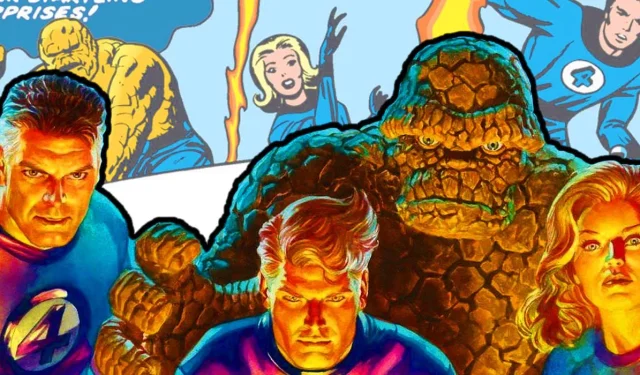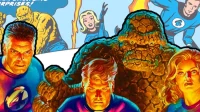For decades, the Fantastic Four have captivated audiences with their unique abilities and adventures across the cosmos. Their talents continuously evolve as they discover innovative ways to harness and integrate their powers. Among the many interpretations of their skills, a captivating storyline introduced an elemental twist to Reed, Sue, Johnny, and Ben’s legacy.
In the publication Timeslip Collection #1, renowned artist Dan Jurgens redefines these classic Marvel heroes. Taking a fresh approach, he transforms their iconic origin story involving cosmic rays into one that intertwines with elemental forces.
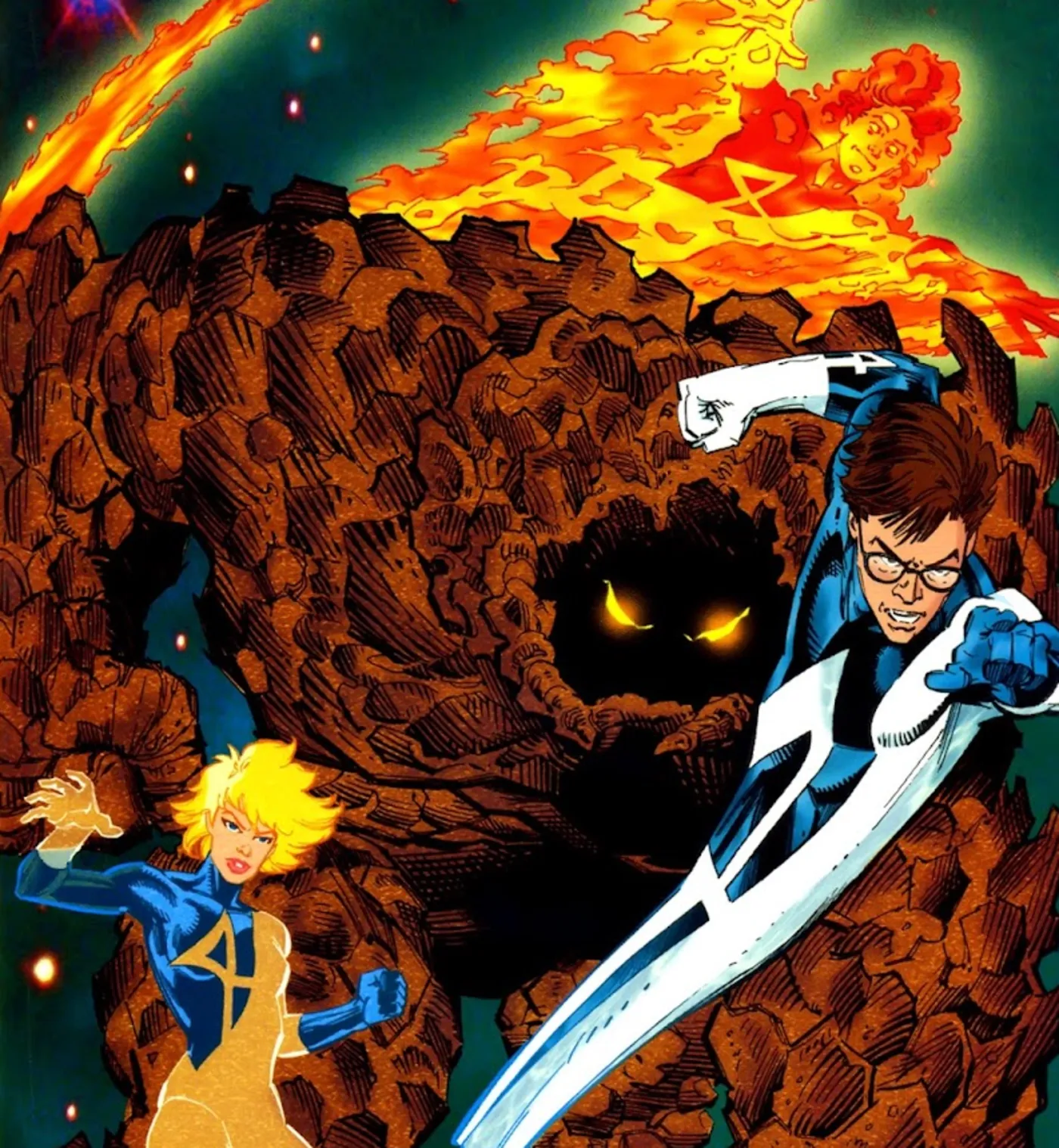
Rather than simply gaining powers from cosmic rays, this reimagining portrays the Fantastic Four as obtaining their extraordinary abilities through the fusion of cosmic radiation and elemental earth materials. Each character’s powers are distinctly associated with one of the four classical elements, a theme that is beautifully illustrated in their new character designs.
Timeslip #1, originally released in 1998, features a vibrant two-page spread where various heroes and villains receive creative reconceptions from multiple artists, showcasing the limitless imagination prevalent in the Marvel Universe.
Elemental Powers of Timeslip’s Fantastic Four
Redefining the Fantastic Four: The Elemental Connection
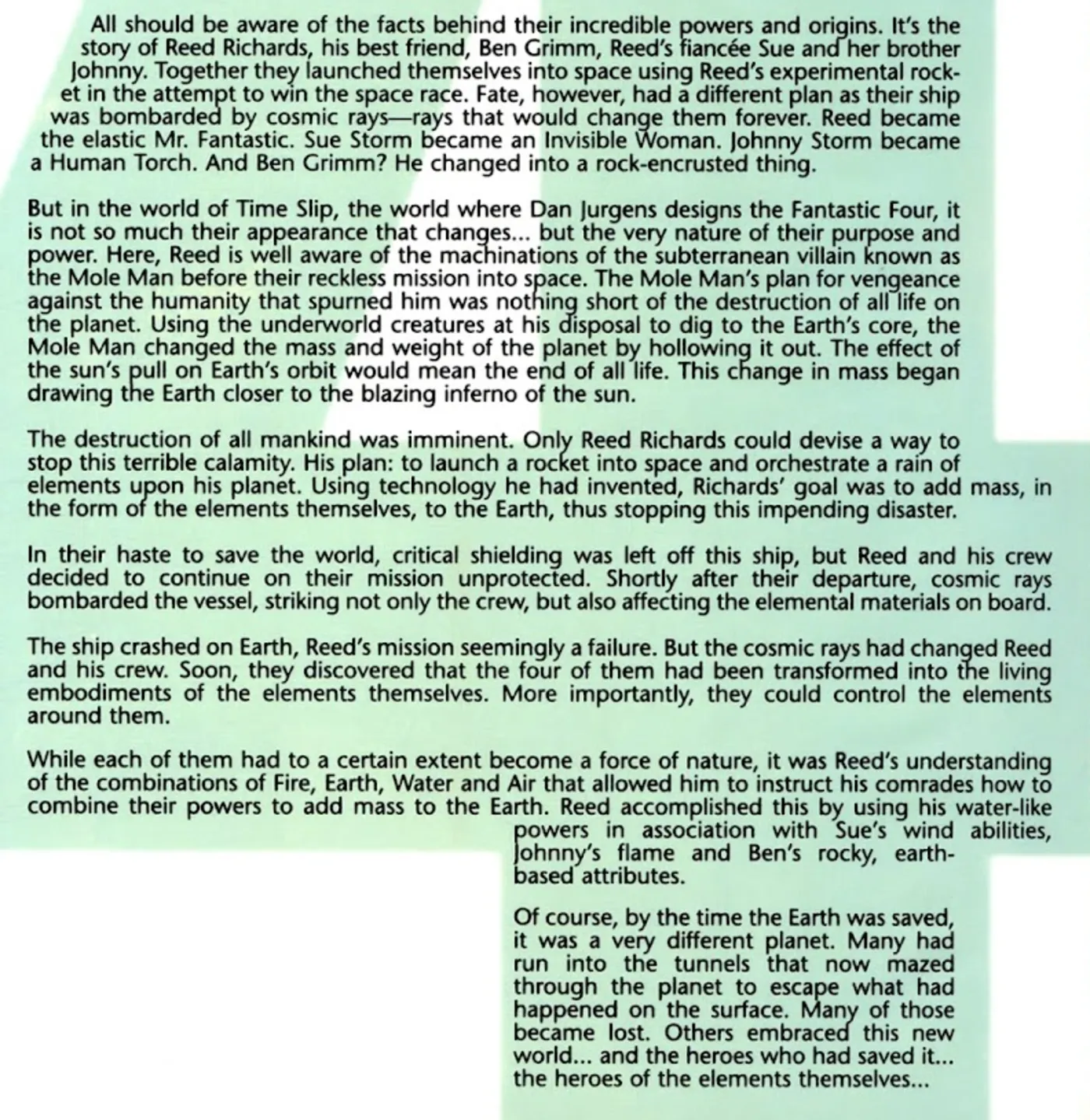
The Fantastic Four’s powers have been scrutinized and redefined throughout the years. Recently, it appears that Reed Richards has had a pivotal role in shaping the abilities bestowed upon his teammates, making them nearly impossible to duplicate. However, in Timeslip #1, Jurgens feels free to break away from established norms, opting for a natural alignment between characters and elements. Reed’s malleable and stretching abilities represent water, while the Invisible Woman’s ability to vanish connects her with air. The Human Torch epitomizes fire, and The Thing’s rocky exterior correlates seamlessly with earth.
Jurgen’s artistic interpretation also includes a striking aesthetic redesign that emphasizes their elemental identity. The Thing appears almost volcanic, with fiery yellow eyes set against a dark stone-like body that deviates from his typical orange appearance. Johnny Storm embodies the essence of fire in his vibrant “Flame On”form, while Reed demonstrates the flexibility of water. The Invisible Woman appears poised to command air’s currents, creating a collective visual identity that is both familiar and refreshingly new.
A New Era: The Elemental Origins of the Fantastic Four
The Elemental Transformation of the Fantastic Four
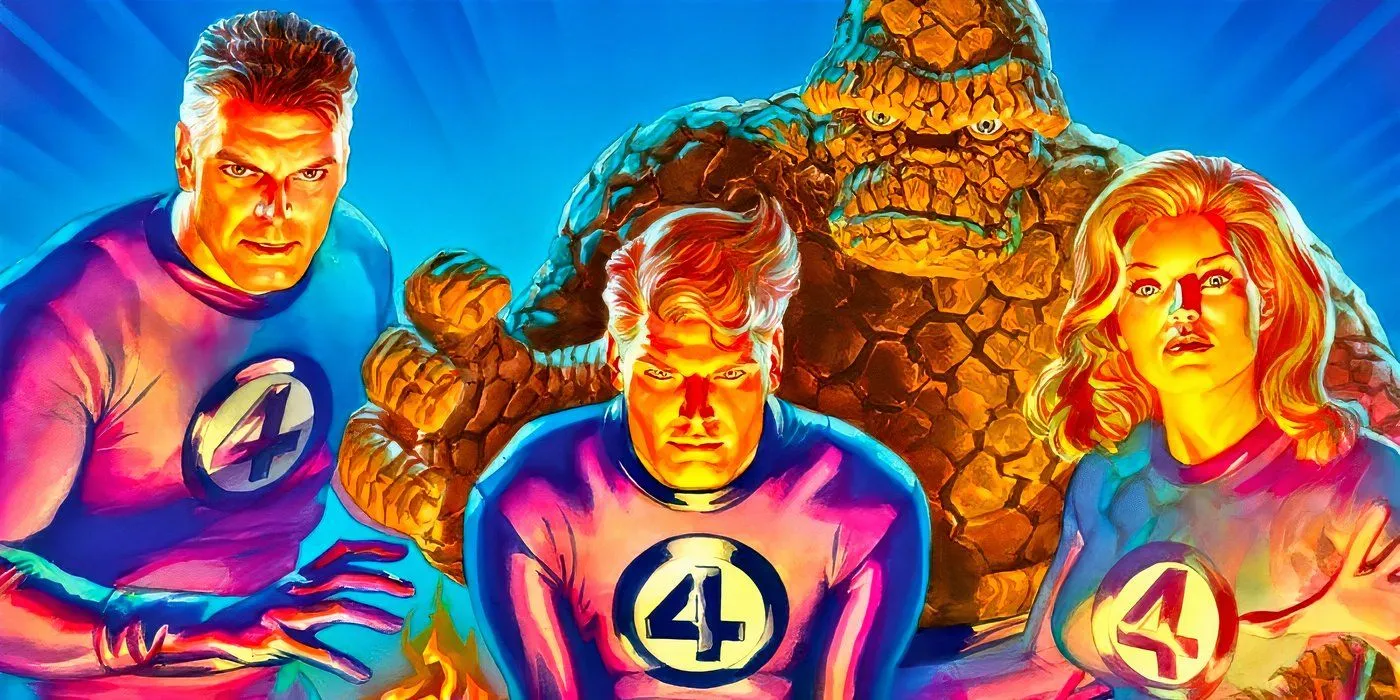
Initially, the elemental powers serve to combat Mole Man’s destructive intentions; however, they ultimately resonate deeply with the essence of the Fantastic Four. The seamless connection each hero shares with their specific element feels almost serendipitous, creating a fresh lens through which to view their abilities. This transformation enables the team to function cohesively while still allowing individual strengths to shine. Marvel’s reinvention of the Fantastic Four as elemental entities is not only fitting but a tribute to their enduring legacy.
Timeslip #1 is currently available from Marvel Comics for readers eager to explore this innovative take on a beloved superhero team.
